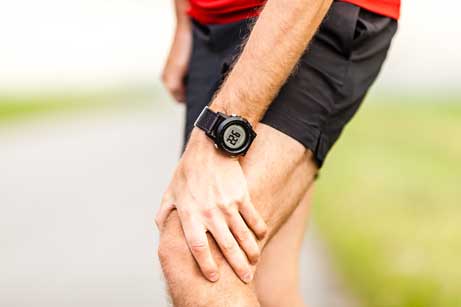
It’s not uncommon for many people to suffer from knee pain as we age. Whether we prefer rigorous activities like running, skiing or tennis; or we prefer lighter activities like swimming, our knees tend to take the brunt of the weight and motion of these activities. Even everyday activities like walking, stair climbing or just standing can make our knees become sore and painful. There are many ways to go about reducing this pain and preventing it from happening altogether. Having knee pain can be very debilitating and really take a toll on your daily routine. Here are some great ways to keep your knees free from pain.
Targeted Exercises
Keeping in shape is a great way to keep all of your joints healthy and less likely to have pain. Specifically performing exercises targeting your knees is important if you are worried about their resiliency and longevity. Here are some great exercises to add to your regimen that will keep your knees strong and going the distance. Be sure to warm up first for a good 5-10 minutes. You can start by going for a brisk walk or using a stationary bike.
1. Straight Leg Lift
A great introductory strengthening knee move is called the straight leg lift. It will target the quadriceps and put very little strain on the knee itself. Simply lay on your back on a flat surface. Bend of your knees and place that same foot flat on the ground. Then, keep your other leg straight and lift it to the height of your other knee. Be sure to perform this move several times on each leg.
2. Calf Raises
Another easy move is the calf raise and it can be done virtually anywhere. You can start by facing a wall or a chair for support, then raising your heels as high as you can. It also works great if you can stand on a stair or ledge to gain more range of motion. An advanced technique is to raise one leg at a time or add lightweights.
3. Hamstring curls
While lying flat on your stomach, curl both legs towards your buttocks at the same time and hold. If you are unable to lay on your stomach, you can also stand up and curl each leg separately. This move targets the back of your thigh.
4. Prone Straight Leg Raises
Similar to the hamstring curl, you will also lay on your stomach for the prone straight leg raise. As the name suggests, you will keep keep both legs straight, then one at a time you will lift each leg as high as you can. For optimum strengthening, hold each leg up for 3-5 seconds before lowering back down. You should not experience pain while performing this exercise. Try not lifting your leg as high if you feel discomfort in your back and stop the exercise altogether if pain persists.
5. Wall Sit
A more advanced move is the wall sit or wall squat. You’ll place both feet flat on the ground and back up to a wall. Then, slowly squat down with feet shoulder width apart. Always make sure your back and pelvis are against the wall. Sink down and hold for 5-10 seconds. Be sure to do a few reps and increase your time best you can. If you feel any pain or discomfort, stop this exercise immediately.
Diet
While exercises are great for toning and strengthening, keeping a healthy and balanced diet is just as important. Your diet will help your knees in two ways.
First, maintaining a healthy diet will keep your weight in check. Having a healthy weight for your height and age will mean less stress on your knees. Keeping pressure off of your knees will keep them stronger and less likely to become painful.
Second, your diet can help keep your knees strong. Having a diet with proper amounts of vitamins will help you avoid knee pain. Topping the list is vitamin D, which can be found in fish like salmon and mackerel. A diet high in vitamin E and C are also important in knee health. Maintaining these vitamins in your diet means less likelihood of osteoarthritis and other serious knee issues.
Medicine
You might be at the point where you are already experiencing pain in your knees and looking for a solution. At this point it becomes imperative to schedule a consultation with a doctor to review your treatment options. Some of these options may include physical therapy, injections, prescription medications or even surgery.
Physical therapy can include things like stretching, massage and electrical nerve stimulation. Make sure you under the guidance of a trained medical staff.
Sometimes an injection of hyaluronic acid might be helpful. This will lubricate and coat the affected joint.
When over the counter medicines like NSAIDs become less effective, your doctor may prescribe something stronger. Be sure to go over all of your options thoroughly.
Lastly, surgery might be your only solution when other options have not helped alleviate your knee pain. These surgeries could include arthroscopic surgery or joint replacement surgery. Your specific knee condition will determine which surgery is best for you.
Overall, it is important to keep your knees strong and healthy. We have seen that daily exercises and proper nutrition are essential to joint health. When all else fails and pain persists, it is very important to have your knees reviewed and treated by a doctor. Treatments will always be determined after a careful and considerate review of your individual situation.
Comments are closed.
